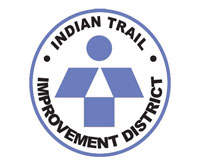The Indian Trail Board of Supervisors held a workshop on its proposed R3 road improvement plan and heard presentations by staff on the workings of the district for the benefit of new supervisors on Saturday, Jan. 12, followed by a bus tour of the district.
ITID President Betty Argue explained that the R3 plan will create a new unit of development to improve road sections that benefit all Acreage-area residents, rather than place an undue financial burden on the residents of a particular unit of development.
It will be set up similar to the M1 and M2 drainage basins, which are units of development that focus on drainage, and the residents of those respective units collectively pay assessments for drainage.
Unlike incorporated municipal governments, ITID is a limited-purpose government, and any improvements must be benefit assessed, Argue said.
“We call it a unit of development, but it’s actually the drainage basin, so all of the people in the M1 basin share the expenses of the drainage in the M1,” she said. “In the M2, all of the units that are activated there share the cost of the drainage.”
Argue went on to explain that the R1 and R2 road plans were created to bring pavement closer to people’s homes. The R1 plan brought pavement to within one mile of homes, and the R2 plan brought pavement to within a half-mile of homes.
“We’re going through the same process right now with the R3 in essentially determining what would be consistent in the plan, who would benefit from the plan,” Argue said. “Whoever benefits from it must share the cost of it.”
The R3 plan developed as supervisors saw that there were traffic issues around schools, fire stations and public facilities, as well as roads that are used as cut-throughs. The supervisors decided that correcting the problems should be shared by all property owners, not just residents of each particular area.
“The one that is most well-known is 180th Avenue,” Argue said. “It’s a millings road. There are people there who drive that road every day. Because of the traffic on that road for the two schools, for Friedland Park, and just the residential traffic alone, it was really just beat up.”
The road has been re-milled several times at great expense to ITID, which led to an effort to get the road paved in order to reduce maintenance.
“We were told it’s not in a road plan, and the reason is that it was not put in a road plan,” Argue said. “It should have been put in a plan when the schools were built.”
Argue explained that the school district paved the roads directly in front of the school property.
“Now they’re having trouble getting in and out [of the school],” Argue said. “It started to highlight the issues that we’ve been having in that area. The only way to address them is by putting them in a road plan.”
Argue added that paving is considered a major capital improvement, rather than maintenance.
“We then took a step back and said, ‘We have all these other issues throughout the district that have consistent themes.’ They serve parks, they serve schools, they serve the ITID facilities, and then we have the issue with the fire station here and with 61st Street North,” she said.
Argue said that the R3 plan addresses about a dozen traffic issues in one package, rather than going through the complicated and long process of getting them approved individually.
Another, more controversial issue that the plan will address is dirt roads that are considered cut-through streets used by motorists to avoid heavier traffic on arterial or connector roads.
“Some of these are just small sections, but they’re being used as cut-through traffic from major roads like Northlake and State Road 7,” Argue said. “We’ve had numerous complaints, not to mention maintenance issues, speeding and dust.”
Argue said the R3 plan will save the district money, although it will involve a large up-front cost.
“We have to first-class mail every single taxpayer affected by this. That, in itself, the cost is enormous,” Argue said. “So, we want to get it right, and we don’t want to have to do this again next year. We want to get a little bit of forethought looking into the future.”
Argue stressed that everything in the plan is to address current problems, not future problems that are anticipated with the development of GL Homes and the City of Westlake. “There has been some criticisms out there from residents that it is to facilitate development,” she said. “It absolutely is not. That has never entered into our discussion. It has always been to address our current issues.”
ITID Attorney Mary Viator explained that the R3 plan takes steps to create a more complete road system and fill in the gaps that remained after the R1 and R2 plans were complete.
A public hearing on the plan is scheduled for Thursday, Jan. 31 at 6 p.m. For more information, visit www.indiantrail.com.








